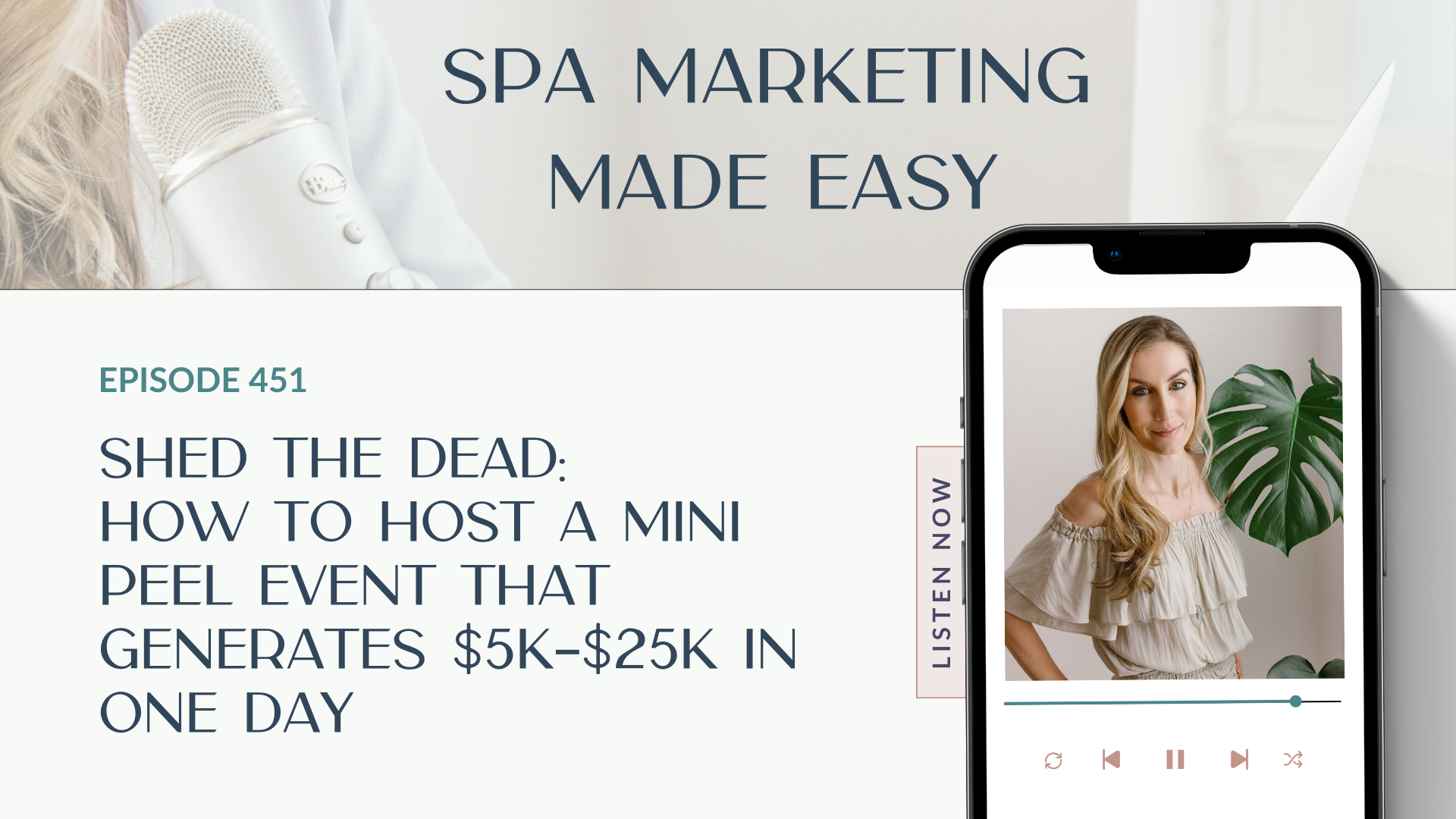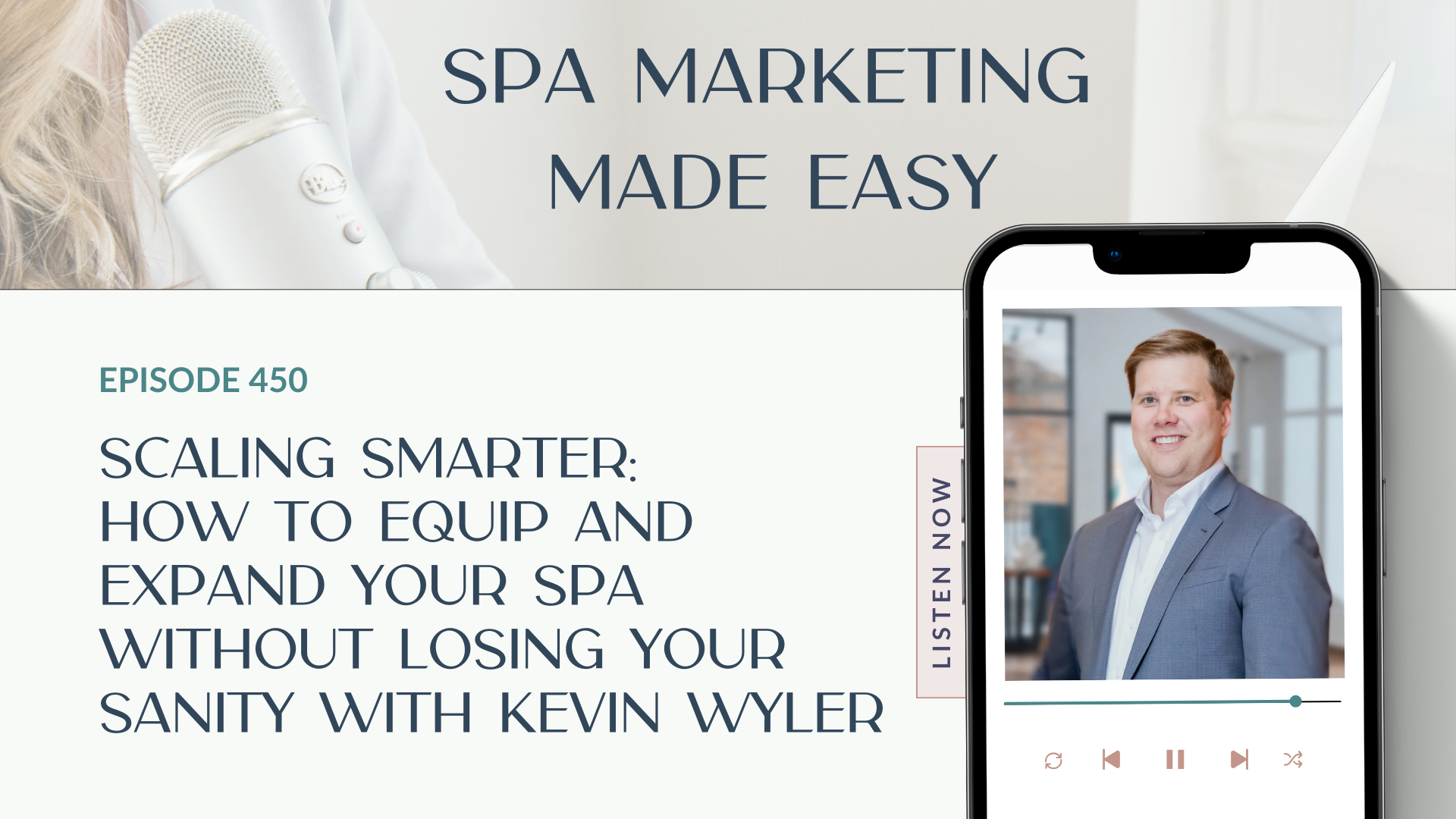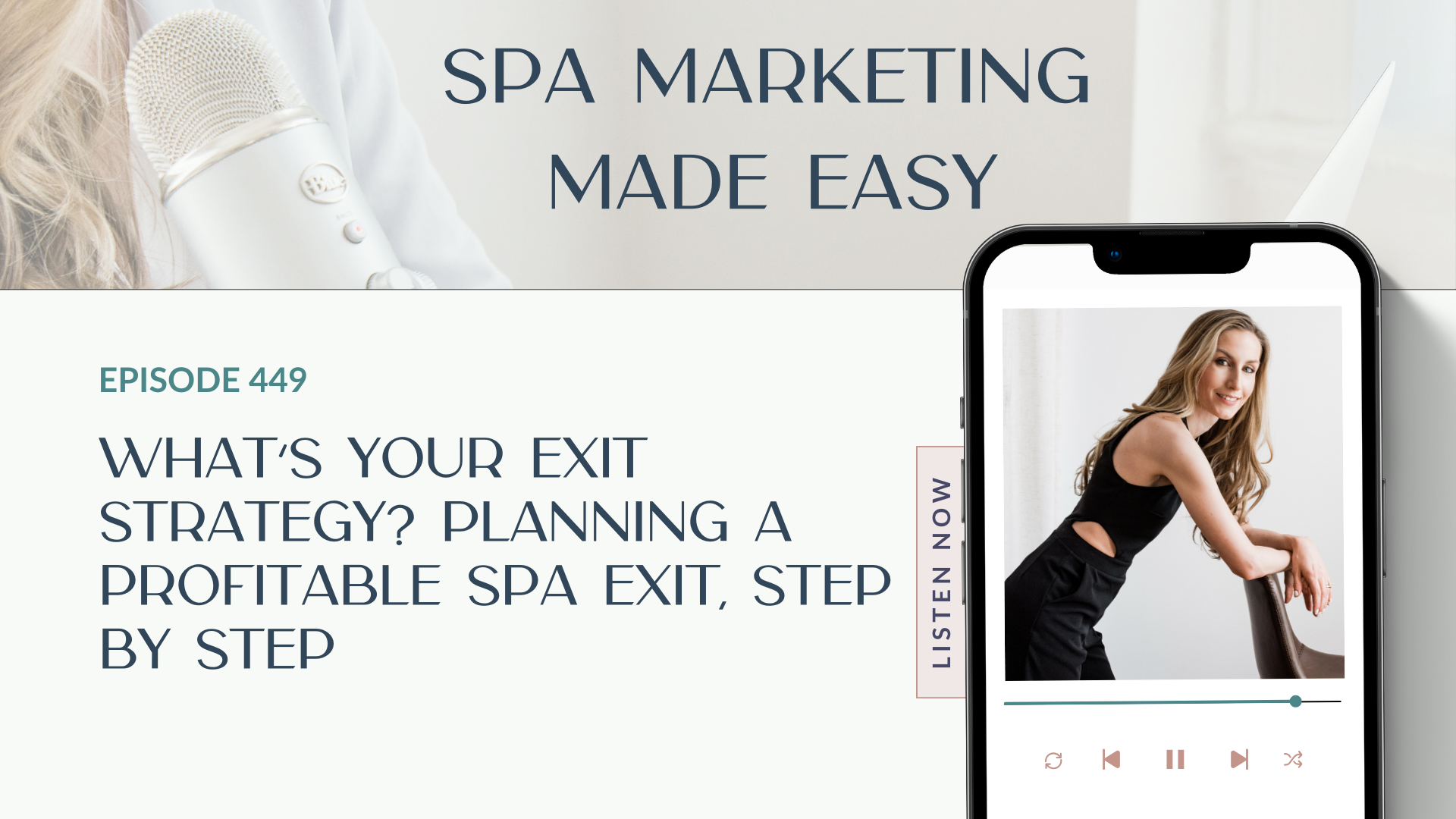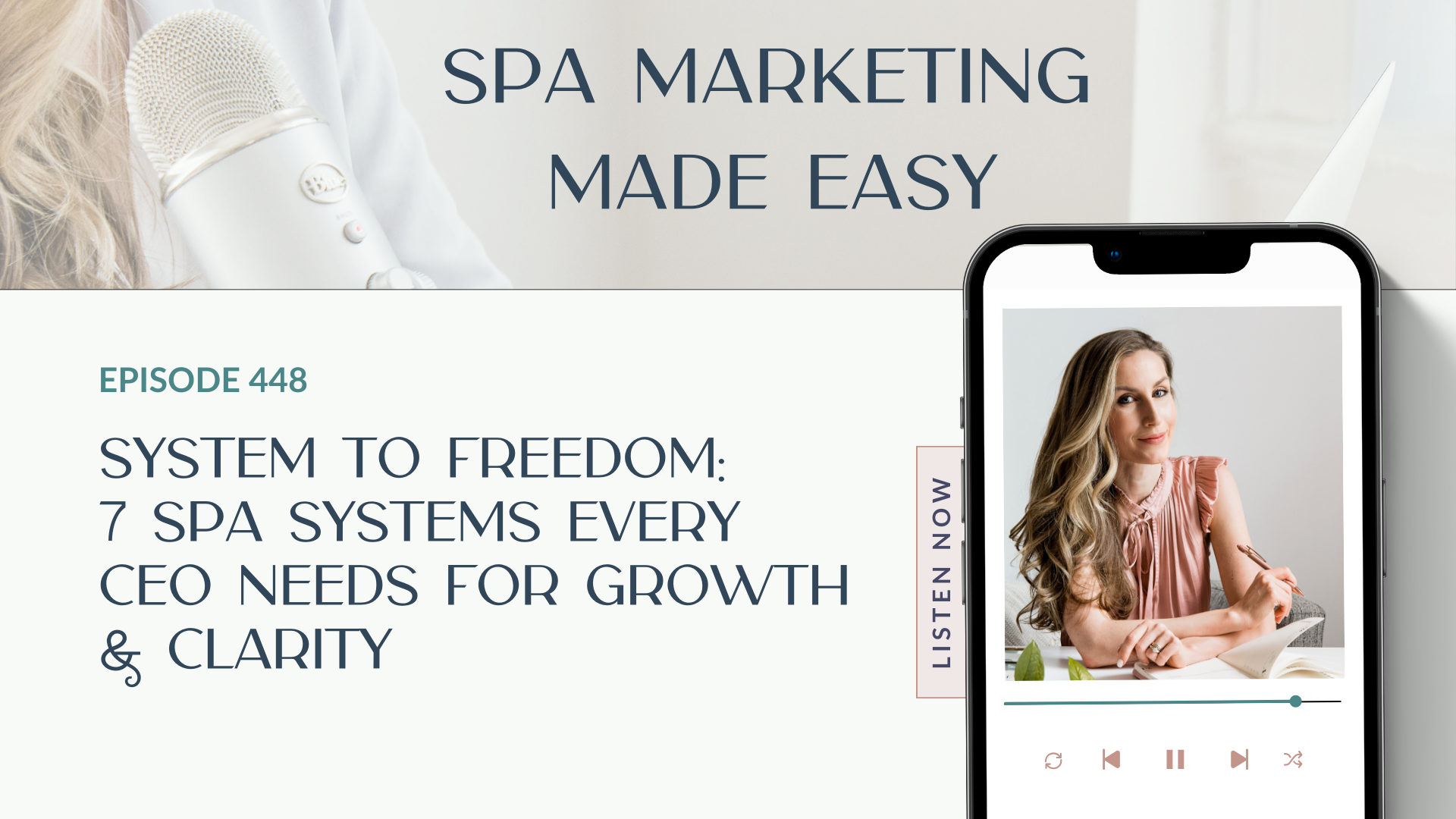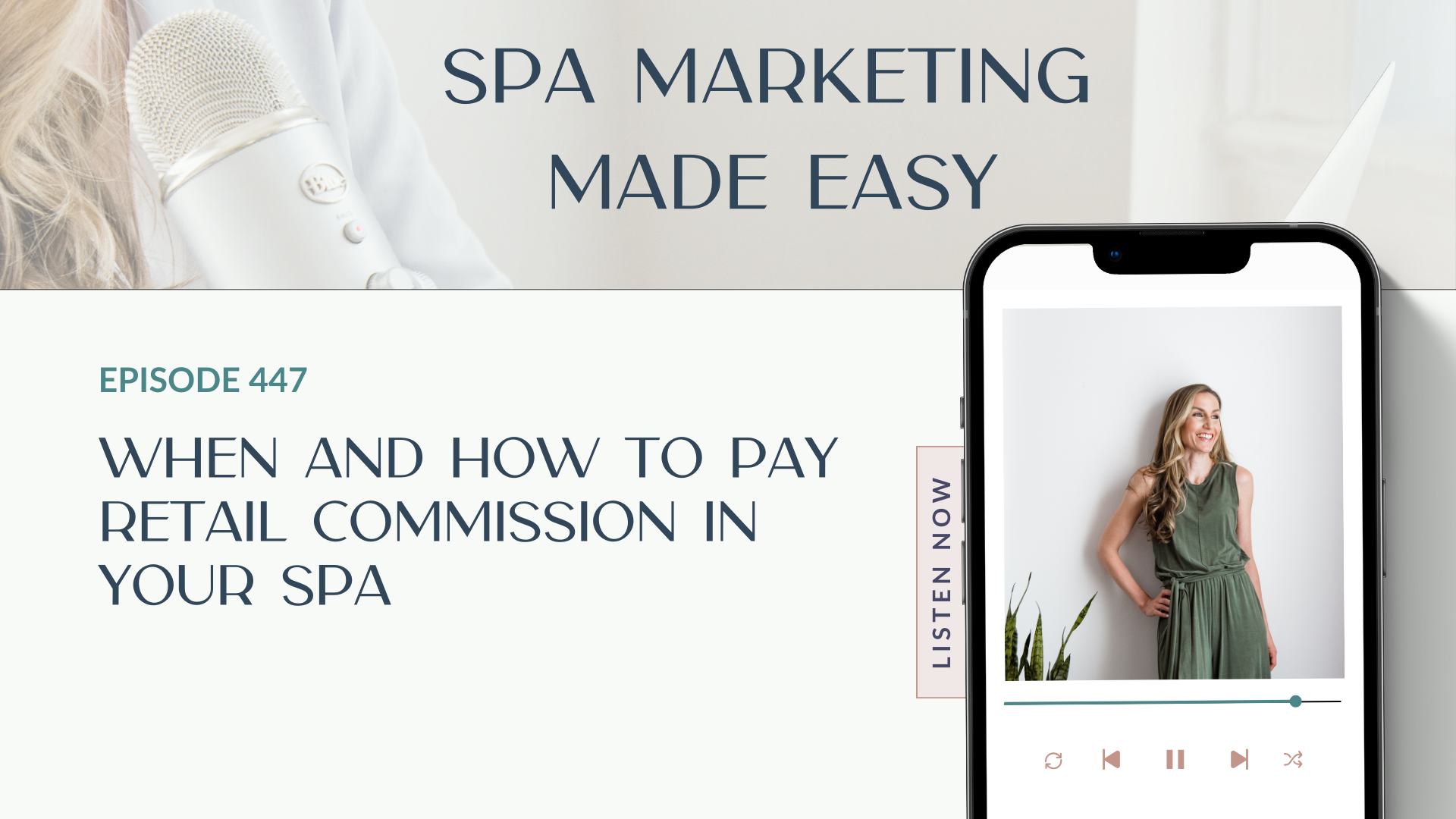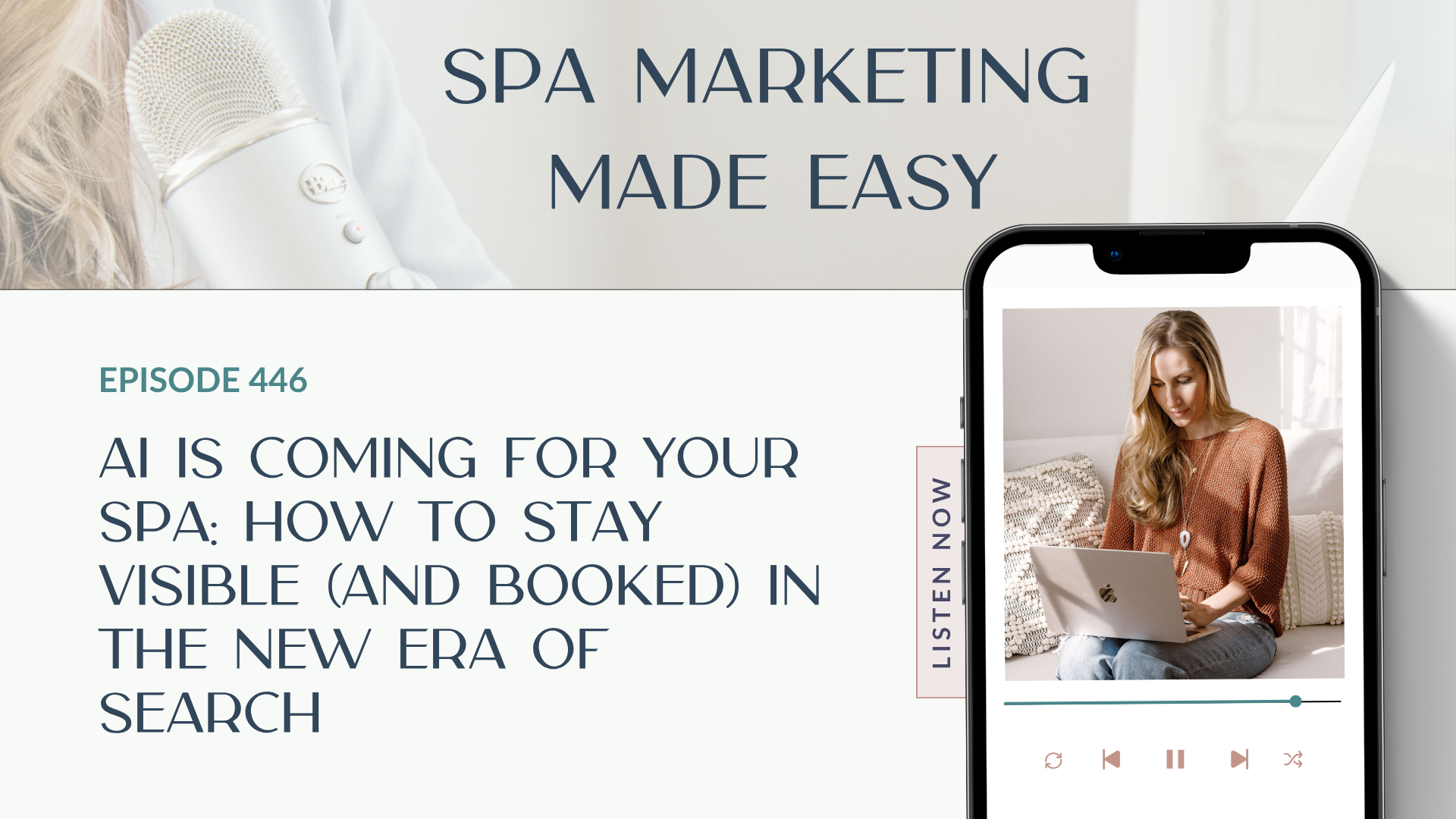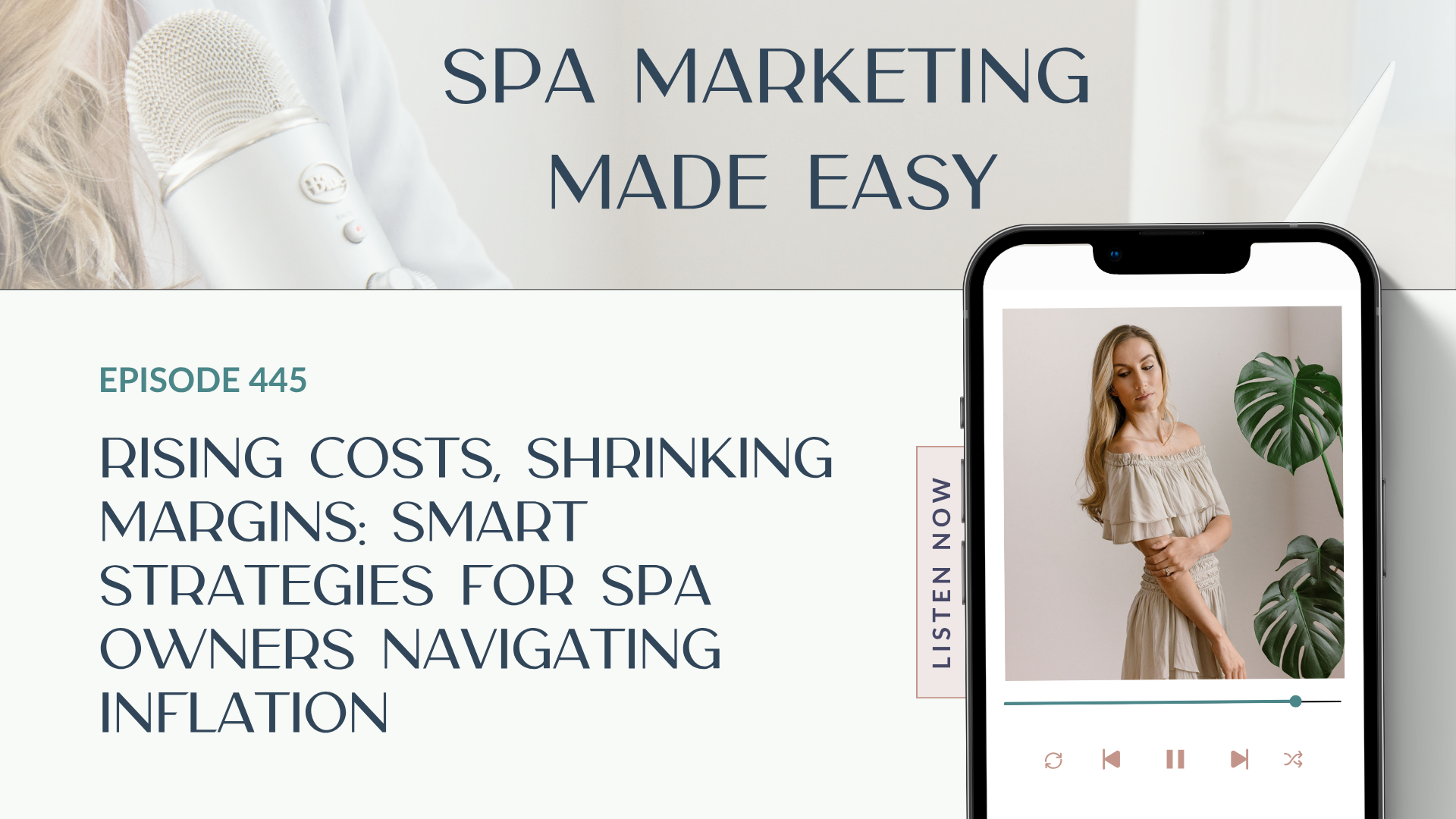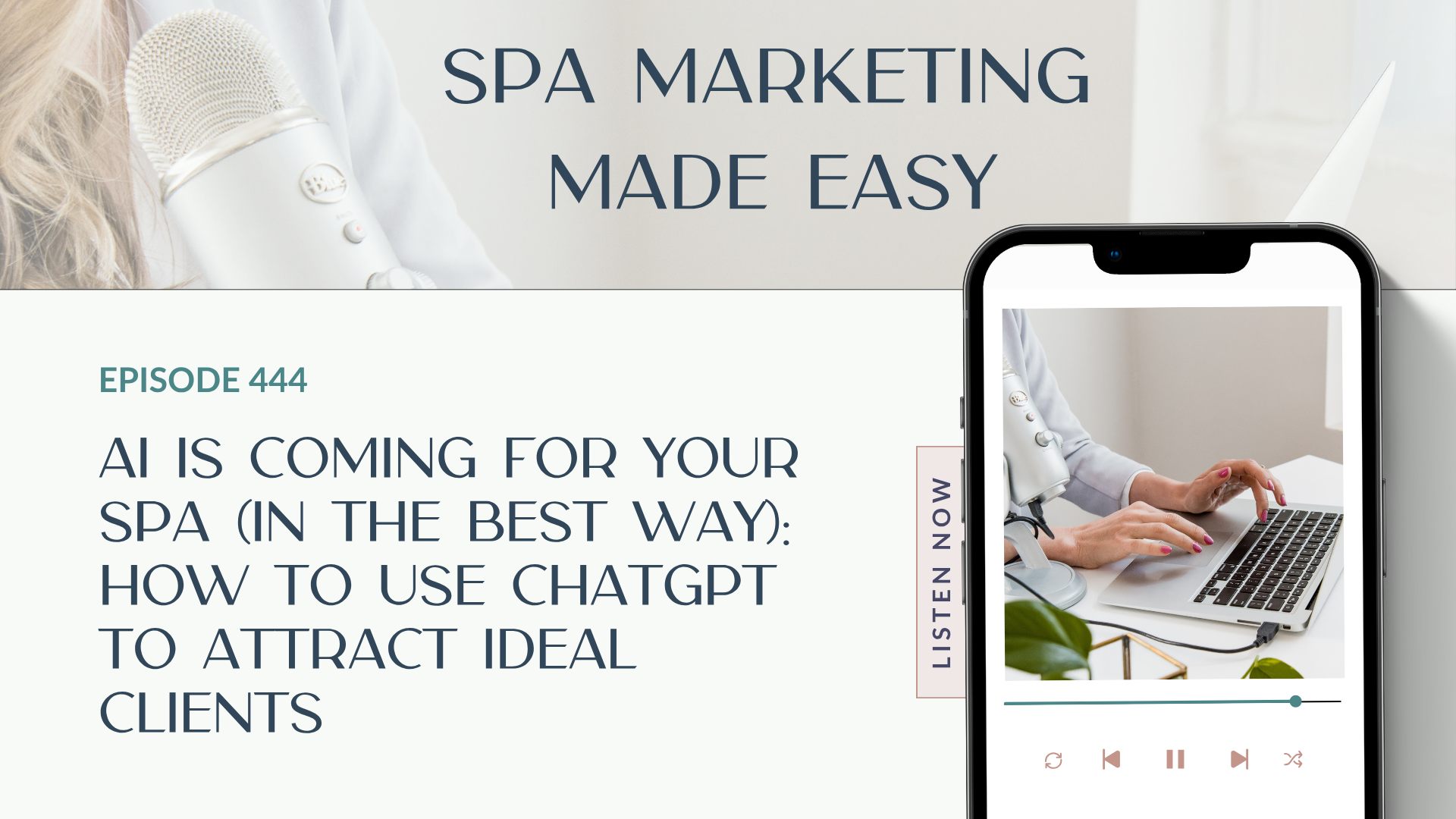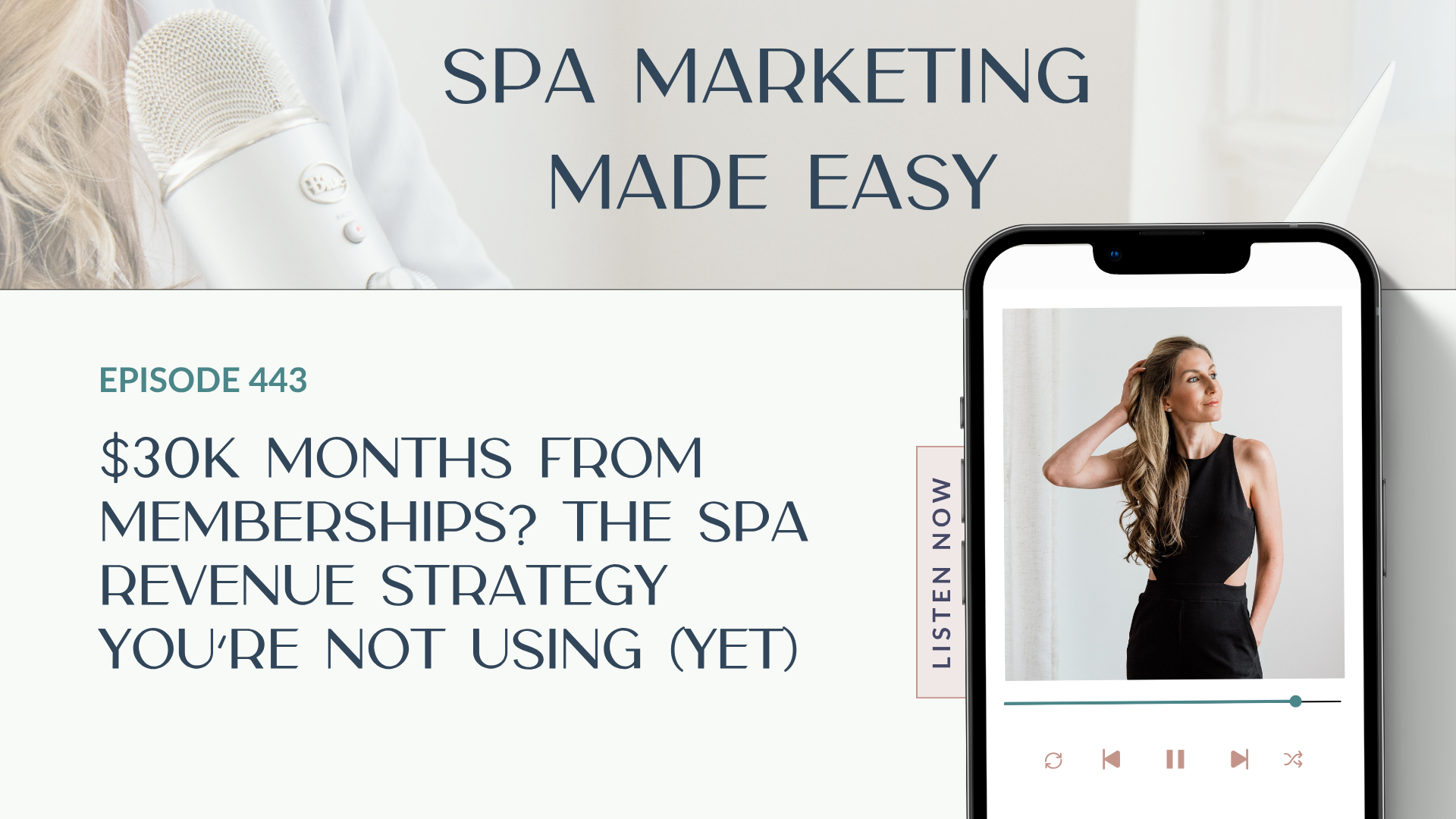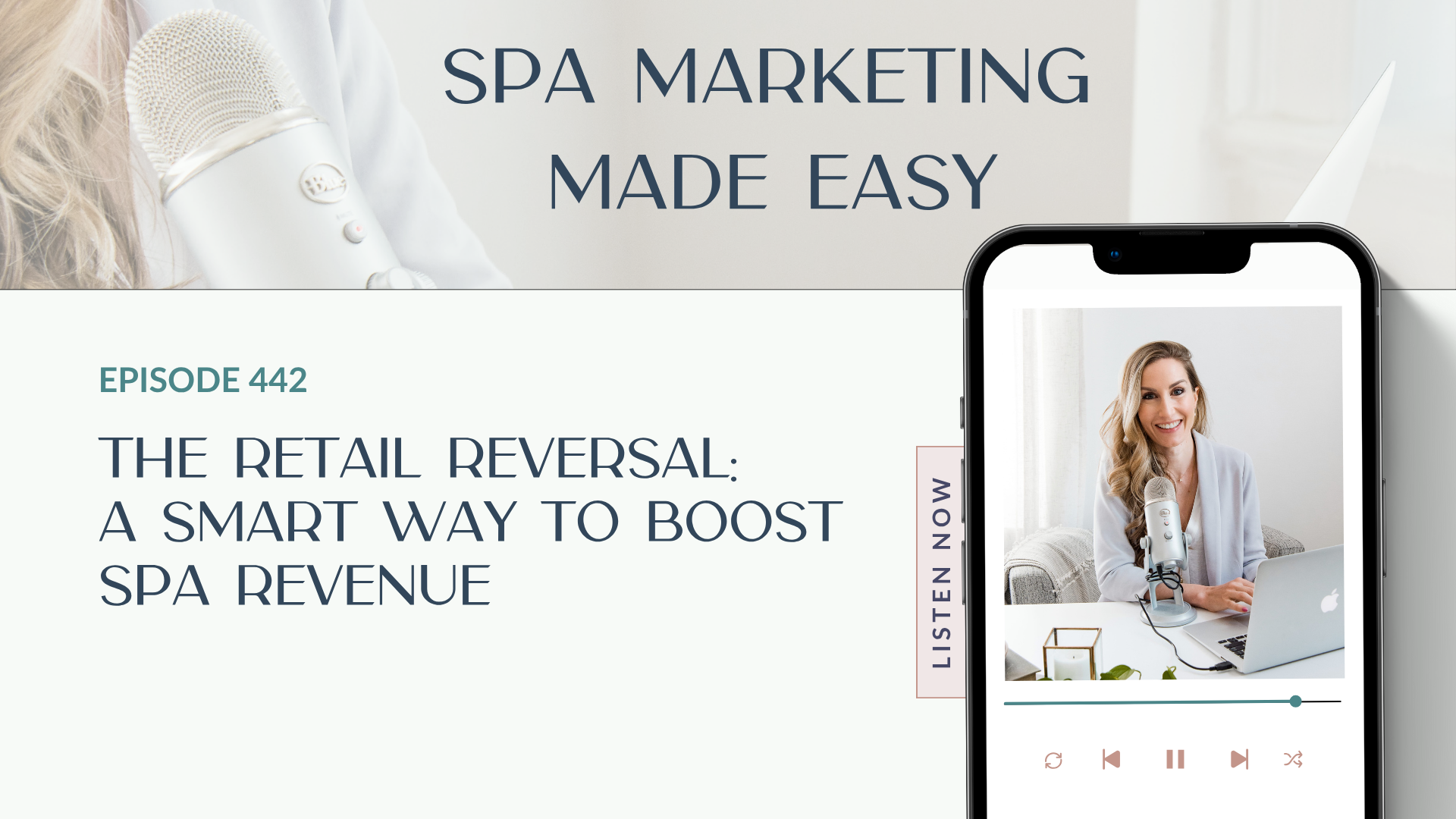Peel season is here—and so is your chance to turn one focused day into a predictable revenue driver.
If big open houses leave you with an event hangover, you’ll love the mini-event model. A “Shed the Dead” peel party is compact, VIP by design, and built to generate real revenue, without draining your team or your calendar.
Why Mini Events Win (and Feel Good to Run)
Skip the chaos and go strategic. Mini peel events:
- Protect your time and energy with small, curated groups
- Create an elevated, VIP experience clients rave about
- Generate predictable, trackable revenue in a single day
- Strengthen client relationships that translate into long-term packages
Yes—this can be a $5K–$25K day (and much more with multiple providers). The magic is in the model.
What you’ll learn during this episode:
- The Irresistible Ticket Offer: What makes it a no-brainer (and how to position it as a ticketed event, not a discounted treatment).
- Pricing That Maximizes Revenue: The smart way to structure packages and retail so the event pays you twice, day-of and in the months that follow.
- The 3-Week Promo Plan: A simple gain/logic/fear content rhythm that fills limited spots and fuels FOMO without spamming your feed.
- Day-Of Flow & Roles: How to keep the experience exclusive, on-time, and sales-savvy—without feeling salesy.
- Follow-Up That Converts: A low-pressure, high-service down-sell approach that turns “I need to think about it” into booked series and homecare wins.
- Real-World Results: Revenue snapshots from spas using this strategy (including multi-provider teams hitting big numbers).
Pro tip from the episode: Thursday events tend to perform best. Try it and track your data.
Is This Right for Your Spa?
If you’re ready to replace overwhelm with a repeatable system – and you want an event that actually moves the needle – this is for you. Mini events are especially powerful for warm clients who are great candidates for a peel series and homecare.
Listen & Build Your Plan
🎧 Tune in now: Shed the Dead: How to Host a Mini Peel Event That Generates $5K–$25K in One Day
After you listen, tell us your takeaways and your event date—we love cheering you on.

Subscribe to Our Newsletter
Stay up-to-date with our email newsletter to receive important updates, news, and offers!
IG / @addoaesthetics
WEB / addoaesthetics.com
YOUTUBE / @addoaesthetics
LINKEDIN / @addoaesthetics
ABOUT THE SPA MARKETING MADE EASY HOST
About Your Host, Daniela Woerner
Daniela Woerner is the founder and CEO of Addo Aesthetics, a leading community for aesthetic professionals, and the creator of the Growth Factor® Framework—a proven system that has helped 582 six- and seven-figure spa owners scale their businesses with strategy and systems.
With nearly two decades in the aesthetics industry, Daniela has trained alongside top physician-dispensed brands, consulted with leading dermatologists, and helped thousands of spa professionals streamline their operations and maximize profitability.
Her mission? To transform overworked aestheticians into Spa CEOs—building a business and life they love with the strategic systems needed for long-term financial growth.
As the host of the Spa Marketing Made Easy podcast, Daniela brings expert insights, real-world strategies, and in-depth conversations to help spa owners elevate their marketing, optimize their operations, and create sustainable success. With over 400 published episodes, 1 million+ downloads, and a ranking in the top 1% of all podcasts worldwide, Spa Marketing Made Easy is the go-to resource for spa and aesthetic professionals looking to level up.
Tune in each week for actionable strategies, expert interviews, and inspiration to help you build a thriving, systemized, and scalable spa business!
PODCAST TRANSCRIPT:
Hey friends, Daniela here and welcome to the Spa Marketing Made Easy Podcast. Welcome to peel season. We are moving right along, getting that much closer to Q4 to our very busy season, which means it is the perfect time to host a peel event, a mini event, and if you like a good theme, a shed the dead. So I wanted to use this episode to get really into the details of a mini event, a mini peel event. And you know, we’ve taught events for years, event strategy inside of our Growth Factor® Program. So in the past 11 years, we’ve worked with over 1700 spas across the country, and 600 of those spas went through our growth factor program, where we teach events.
And so we’ve seen a lot of people host events. We’ve seen a lot of behind the scenes. And what I want to be crystal clear on is that there is a distinct strategy between a mini event and an open house type of event, and we tend to attract a lot of type A personalities. You know, hello, I see you. And a lot of times, the thing with the Type A is they’re like, Well, I’m going to just throw everything together. I’m going to mash everything together and just do everything possible to ensure that there’s a success. But it’s really important that you follow the every step of these strategies that we have created are there for a very specific reason.
It’s because we’ve seen through trial and error so many different spawners go through these strategies, we’ve seen what works and what doesn’t. So if you are thinking of hosting a shed the dead, I want to go over the steps of a mini event and how you would actually host that. Okay, so a mini event is a day long event where the deliverable is actually received by the client or patient on that same day, and your goal is to sell packages.
Okay, so many events in general work better for your existing clients or patients. So a peel party is a perfect type of mini event, because peels are obviously received in a series for best results, and so we’re going to have them come in, and then we are going to sell them a package that’s going to bundle onto the top of their service that they receive that day. Okay, now what I like about many events versus the open house style of events, is that if you’ve ever hosted an open house style of event, you know what event hangover is? It is like planning a wedding. And if you’re like me, I hate saying this, because it’s it sounds not very nice, but I really don’t like large groups of people. I love people. I find so much good in people. I’m so inspired by people, but being in a large group of people, of people, gives me anxiety.
So I really prefer smaller groups. And if you are in a small group type of setting, you’re able to really engage, you’re able to really be present, and you’re still able to retain your energy. The deliverable is done that day. So for me, a successful mini event, you’re going to generate somewhere between 5000 to upwards of $25,000 in revenue in one day. When this is done properly, they take less planning, there’s less cost, and you can do them more frequently than you can do an open house style of event. Now it’s not to say that open house. Style of events are, you know, off the table.
I think they’re incredibly important for brand awareness. I think they’re incredibly important for attracting new patients and clients. And as you know, we typically lose about 20% of our patient base every single year. That’s, you know, again, for no reason specific to you. People move people’s financial situations change. People get pregnant. There’s a variety of reasons that your patients are going to drop off. And so if we are wanting to maintain, we’ve got to have at least 20% new patients coming in. If we’re wanting to grow, we’ve got to make a goal of 30% new patients coming in, right? So those open house style of events have a purpose.
They can be incredibly beneficial. But if you’re in a sustain year, if you’re just wanting to maintain, do a mini event and ask them to bring a. Friend, right? Do like a friends and family type of thing. There’s lots of ways that you can do it, if you are not in a season of life where you have the energy to put together an open house type of event. Okay, let me move right along here. All right, so the details of your event we always have to start. No matter what you’re doing, you have to start with the intention of what it is that you’re trying to do.
So are you trying to generate $10,000 are you wanting to introduce a new service? Are you wanting to get a new provider booked. So let’s say you’re doing a shed the dead, and I’m just going to use the environ cool peel as an example. We have a lot of accounts that use environ. We’re huge fans of environ. They’re one of our preferred partners, very value driven line, very results oriented, so I’m going to use them as our example. So if you’re doing a cool peel, the consumable cost of a cool peel is very low. So that’s a bonus, right there.
They are also something that is going it can be completed in a 30 minute time frame, that’s a big deal. Time equals money, and we see that so much in Spa. So what you’re going to do is come up with your offer first. So your offer could be, get your ticket to our shed, the dead event for only $99 and receive a complimentary environ, cool peel, valued at 149 Refreshments will be served, plus, for one day only, you are going to have access to some incredible deals on retail and services. So you want the offer to be an absolute no brainer, okay, so if the peel is regularly 149 and they’re getting it for $99 that is a huge savings.
Okay, it’s also really important that we are highlighting that the $99 is for the ticket price to the event, and that they’re receiving the peel complimentary. So this is not something that, if they know show they’re like, Oh, well, I have a $99 peel on my account. No, we need to make sure that it’s crystal clear that they are buying a ticket to the event. There’s a set number of tickets available. You also bonus pro tip. You want to have a separate cancelation policy for people that are booking their appointments in purchasing their tickets, because it’s going to be a lot harder to fill a spot last minute. If you typically have a 24 cancelation 24 hour cancelation policy, you’re going to want to make that maybe like a three to five day cancelation policy for a particular event.
Now you’re going to have less people, I find that peel events you’re going to have anywhere between 10 to 16 patients, usually something along those lines. So just make sure that you’re very clear in all of your communication. Now, for the packages that we’re going to be selling after if you did a package of three, you could offer those at 399, a package of six, at 699 then you can do maybe 15% off of retail in addition to that. Okay, so this is going to assume that a regular 30 minute peel is at a price of 149 and if you’re going to do a 60 minute or a 50 minute peel, if something’s like that, put that at 199 I’m typically looking at packages at approximately 15% off. Okay, so if you need to calculate that yourself, feel free. All right. So then, when we’re looking at the schedule, the event is ideal.
If you have two treatment rooms, I know that’s not always going to be the place there the the you know, possibility, but even if you’re closed during that time period and you’re kind of prepping people in your waiting area and then having somebody in the treatment room, but two treatment rooms is ideal, and we want one room where the patient can be prepped, waiting for their service, and the other room where they’re actually receiving the service.
So let’s say that your event is scheduled from 12 to six. You’ve got appointments every 30 minutes, and you’re going to have 12 spots to fill. If you’re a solo you’re going to have to give yourself a buffer between patients. You can also choose to host the event over two days. If you have a larger practice with multiple providers, you can have multiple rooms going at a time. Okay, so set it up with what makes sense for your practice. But I do not think it’s a good idea to have other treatment rooms going at the same time.
Okay, so you may say, like we if you’re open from nine to. Six, maybe you’ll see regular patients from nine to 11, take an hour break, and then see 12 to six if you are fully set on not canceling the entire day. But I do think that you’re more focused, you’re more rested, you’re more present when the sole thing that you’re focusing on that day is the shed the dead event.
All right, so when we’re looking at team roles, we want your providers to be prepping the patients and actually performing the services. We also want a provider to be consulting with patients after the services, about the packages and also about retail, the front desk is going to be checking patients out, and depending on the workflow of everything, they may book appointments or will set up a schedule where they will be reaching out to the patient The next day to book their appointments, which is probably better to be able to actually get their entire series booked.
And it gives another touch point for the down sell, which I will talk about at the end of this podcast. If you have any spa support, they are going to be assisting in room turnover. They’re going to be making sure that the bathroom has toilet paper. They’re going to be hanging up coats if it’s cold already where you are living. And then social media, so any type of behind the scenes content for marketing purposes, if you’ve heard anything about user generated content, UGC, a mini event, is a great place to collect some of that.
If you have a sign where patients can take selfies, or if they give you permission to take a photo while the service is being performed, you can offer them some sort of bonus if they post it on their account and tag you that is social media gold right now. That is something you know, carousel post and the user generated content are two things that are really increasing engagement, which means increasing sales and bookings for spa.
So we definitely want to incorporate that into our marketing. Now, if you’re a solo and you’re like, look, it is me, myself, and I doing all of the roles. How is this going to work for me? There’s a couple of ways. Okay, you can reach out to your top clients, or really like your raving fans inside of the business and ask them if they can come in and support you in exchange for a complimentary treatment. You can reach out to your friends and ask them, there’s so many different ways that you can have someone come in where they’re not going to be able to consult, right? But they can assist in room turnover.
They can make sure that the bathroom has toilet paper they can be doing social media content. So what are the things that you can have other people be doing? And if you do set up enough time in between the events, you can do this all yourself, but just make sure that you’re keenly aware of your energy and that you’re reserving as much of your energy as possible.
Okay, if you do hire people, or do trade in kind for people, make sure that you are very clear on the expectations you want to let them know what you expect them to be doing. They are not mind readers. So the more clear that you can be, the better. Okay, so I don’t know why I have no scientific backing for this, but events that happen on Thursdays always perform better. Okay, so test it out for yourself. Prove me wrong. But in 20 years in the industry, Thursday events are the best. So select a Thursday. If you have a Thursday available, do the time of the event. Make sure that you know you’re blocking off your calendar in advance. Make sure that you are blocking off that Friday as well for follow up, or just minimal patients that day. Otherwise you will be exhausted and then again, make sure that you are defining the roles and expectations for anyone that’s supporting you at that event. All right, so let’s talk about the marketing. How are we going to fill this up? We’ve got 12 spots available, okay, so we want to make sure that we are first. If we’re doing peels, we want to fill with the right seats, okay? We want to get the right people in there.
So we don’t just want to like hope that we sell 12 $99 tickets. We want to sell $99 tickets to people who are interested in chemical peels and who are great candidates to purchase packages. All right, so we’re going to be combing through. Our patient list and looking at people who have had peels before, looking at our top spenders who would benefit from a series of chemical peels. We only have 12 spots. This is exclusive. This is VIP. This is a way that they can save. So we want to make sure that we’re offering those spots strategically to people who would benefit from them. So we are going to four weeks prior, we’re going to call, we’re going to make our list of VIPs, and we are going to call them specifically and invite them in. Then once we’re done calling, then we’re going to start our social media strategy. We’re going to start our email sequences to make sure that we are getting those 12 spots filled. Okay, so do the outreach.
You may get those 12 spots filled within a week, and do not stop marketing. If that happens first, congratulations. But do not stop marketing. Keep posting about it on social and when people call the RSVP, then you are going to say, Oh, we are all sold out, but I’m going to put your name on the list, and I am going to give you a call if anything opens up. And also, I’m going to put you at the top of my list for the next time that we host one of these.
Because this sold out so quickly, it was incredible. And so we want to really build up that wait list. You can see why this is so important. We’re creating FOMO. We’re showing social proof that there’s demand for this type of event. Okay, all right, let’s move on to your social strategy. And this is like the strategy of threes. Okay, so we want to do three feed, post three stories, post three reels for three weeks leading up to the event.
They do not all have to be just super logical post. And when I say a logical post, it’s the who, what, when, where, why, how, right. What is it? How much does it cost? You know, like these very traditional promotional posts, you can create a reel that’s just somebody actually getting the peel, and in the caption you can talk about your event and say, you know, RSVP, call here to RSVP, or whatever the call to action is So really think about how you want that to how you want to break that up. And I would say maybe once a week you can do a logic post, but the other one should be talking about the benefit, you know, those, those of you that have been through our growth factor program, you know, we talk about gain logic fear in marketing. So gain is the Imagine yourself with clear skin, imagine yourself not having to wear makeup, and going out and feeling so beautiful. It’s the future oriented possibilities once you reach your certain goal.
Logic is the who, what, when, where, why, how and fear is. Don’t miss out. Don’t waste more time. Don’t be in the same place next year. It’s the negative. It’s the fear based. So we are going through, you know, creating a variety of these posts that are motivating based on gain, logic and fear. Okay, you want to do this for three weeks leading up to the event, and again, if you have before and afters, if you have, like, a educational post that talks about contraindications, who are appeals for, etc. So you’re really looking at your marketing content as how is this going to answer the questions that someone may have about pills?
How am I going to showcase the benefits for someone who’s been curious about pills, but even now, gosh, how many years later is has Sex in the City? I mean, it’s not even on anymore, and people still will say, I don’t want to look like Samantha from Sex and the City, right? That peel scene really caused a lot of a lot of impact for so many women, because that’s what they thought they were going to look like with a chemical peel. And as you know, that is so not the case, right? There’s so many different types of peels out there, some that you actually don’t even peel to be able to get the benefit. So we need to educate on those different aspects. Okay, so have a variety of different content, as I was saying before, carousel post right now, and I am recording this in September of 2025 and so if you’re listening to this later than that, there’s always a possibility that the algorithm changes. But this in September 2025 right now, carousel posts are actually getting more engagement than any other type of post on Instagram.
So it’s carousel post top. Yeah, then reels, and then just your static post, okay, so make sure that you are paying attention to what type of posts are getting engagement on your site and then on your profile, and then try creating some of that content just for a carousel post. You can use the same image and just put the caption on, you know, three to five different slides so that people are swiping through to read instead of reading the actual caption below. Okay with stories post. Also, you can post your reel into the stories, or you can post your other one into the stories, if you are having trouble coming up with content. But the reality is friends that content is no longer a excuse, because we have chatgpt, and if you’re using chatgpt correctly, you should be able to operate like you have a marketing team of 20. If you know how to ask the right questions, you can get so much content created in minutes. Okay, so ask chatgpt for some ideas on what you can post and make sure that you are, you know, we recommend creating a company bio document. We recommend creating an ICA document and feed that through. First say, here’s who we are as a company.
Here’s who our ICA is our ideal client avatar. We’re hosting a shed the dead peel event, and we want to attract this type of person. Help me to create social content that follows the gain logic, fear model to generate content for Instagram. Okay? So it’s, it’s asking the right types of prompts that will make such a huge difference. Okay, you also want to make sure that there’s a CTA in there. How are people going to RSVP, right? You want to, are they going to DM you? Are they going to call like, what is the process that is going to be a really important piece. Now if, for some reason, you are having trouble getting those 12 spots filled, make sure that you have printed signage in your spa.
Make sure that you’re talking to people every time that they come in, letting them know about it. If you have any type of strategic partners or relationships in your community when you’re out there, being the mayor of your town, getting involved, showing your face, make sure that you’re sharing this event with them. If there’s any type of Facebook groups that you can post in that’s like, please be in alignment with the rules, because nobody likes spam. But if there are posts that you’re able to post about these types of things, phenomenal, BNI, Chamber of Commerce, all of those types of things, get the word out. 12 spots is not that many spots to sell. Okay, so, but you do want to start with your clients. Those are going to be what we call your warmest leads that already know, like and trust you have already received chemical peels, they’re going to feel so excited to be a part of this. Okay? Now the day of the event, you want to invite them to come in 15 minutes prior to their treatment time. Okay, so this is going to you’re going to greet them, you’re going to offer them a refreshment.
You’re going to move them into the prep room. You’re going to make sure that their consents are signed. You’re going to answer any questions that they have about post care you want to make sure that products are visible in the room, because we’re definitely going to have post care products that they will be able to receive a 15% discount on then once they are moved from the prep room, you’re going to move them into the treatment room. They’ll receive their service, and then they’ll be moved if you have an area where there’s retail, maybe have a charcuterie board, some sparkling ciders or some champagne, whatever is in alignment with your brand. Have something there where there can be a person, and that may be you talking about home care, talking about packages, and if you’re staggering these appointments and giving enough time, it really can help them to feel like this is such an exclusive, fun event. All right, I do not recommend having walk ins come in during this time. The closure of the spa makes it feel more exclusive, and walk ins can really disrupt the flow, okay, so close the spa is something that I highly, highly recommend. All right, so let’s move on to the down sell. Because this is a space where so many practice owners are leaving 1000s of dollars on the table. I feel like I’ve talked about the down sell. A lot people feel like, okay, my event is over. I’m so happy we you know. We did X amount of dollars, but the magic happens in that week. Immediately. Post, okay, so what you want to do is make sure that you are reviewing the purchases of the patients or clients who came in, and so you want to go through and if Christy is my patient, I’ll be like, Christy, it was so great seeing you yesterday. Thank you so much for coming in for our shed the dead peel event. It was so much fun. And I hope that you know, it’s getting you into the holiday spirit. You know Halloween is kind of I always look at Peel season. It’s like back to school Halloween. It just gets busy. It just gets a busy time. And there’s always something new or fun to look forward to each month. So say, Hey, thank you so much for coming to our shed the dead event. It was kind of it was a fun start of, you know, getting us ready for the holidays, making sure you look and feel your best. I’d love to get those appointments booked out for you, because, as I said before, this is such a busy time of year, so I want to make sure that your self care is prioritized. And I was looking at your home care we I saw that you got these products, but when I looked back at your purchases for the past year, you actually have been purchasing this product as well. So I wanted to just, if you want to add that in, I’ll go ahead and extend the discount for you. But this is something that you’ve been purchasing consistently throughout the year. So going back, you’re looking at their sales. It’s kind of like, you know, when you go to Costco and they scan your membership card now they’re like, if you would have been an executive member, you would have saved $150 so far this year, and then you immediately, obviously upgrade to the executive membership, right? So we’re looking at like, how can we show them their benefits ahead of time? If they were to purchase, hey, you bought this product X amount of times, you’re going to get 15% off. So if you purchase now, you’re going to have a savings of X amount, right? So really highlighting it in that way for them can be really beneficial.
Then the patients who didn’t purchase because some people, they just need to think about it. My husband is like this. He can be like a hell yes on something, and he still is going to think about it. Okay, I’m more I just take action, right? That might be an entrepreneurial trait, but if I know that I want something, I’m going to take action on it. But we have people that are not like that, we need to honor that and not push them and because that can create some bad will in the relationship. And so when you’re calling them like the next day if they didn’t purchase, say, Hey, I I totally understand. You know, thank you so much for coming to our shed the dead event. It was so great to see you. I wanted to reach out and let you know that we are going to extend our specials for those who are at the event for one week, and I’m going to open up my schedule if you want to have a little more time to consult.
I know we never want anyone to feel rushed or pressured. And if you need a consultation or have any specific questions or wanted to just take a time to sleep on it, then we wanted to give you that option and let you know that we’re going to extend the specials for one week. So let me know how I can support you in making the decision that’s best for you. So we’re being supportive, right? We’re we’re really focusing honestly on customer service, which is something that I feel like has been kind of lost in the past couple of years. This has been a very challenging five years in our industry, and we really need to obviously maintain our boundaries now. There’s a difference between focusing on customer service and and not just like letting all of our boundaries fall right? So we want to go through and call all the people that were there offer whatever offers we need to do, and then I want to go back to that list of people who RSVPed if we sold out on the first day. So you may have said, You know what, I’m just going to add a second day, and that’s fine. But you could also call those people, and we’re not going to offer them the same offer. They they cannot get the same offer because we want to really honor the people who committed to show up and be present there. But you could do an offer specifically to the people who RSVP but were not able to go because we had sold out the spots. And maybe you offer them the packages, but not the discount on retail. So think about something, but this is an internal offer. This is not something that we’re like posting. It’s the after party, you know, on social media, and people are getting excited about that. No. So we are keeping this we’re training our people that if you want these offers, you are coming to this particular event, and this is a VIP type of event that we’re doing for, you know, specific you’ve got to take action to be able to get included with these deals. Okay, so let’s do a little bit of math here.
Okay, so if we do 12 clients at $99 that is going to be 1188 in revenue, if you have a 50% retail to service percentage. And so I’m taking 149 times 12 equals 1788 and divide or multiplying that by 50% that’s $894 now I’m taking the 50% on the 149 not on the 99 because I I want to honor that regular price there. So I’m looking at $894 in retail. Let’s say that I have a 50% conversion on packages. So six people purchase four, purchase the 399 to purchase the 699 and then in the down sell, I sell three additional packages of three for 1197 in revenue. So in one day, I generated $6,273 in revenue, which, if you’re solo, and you’re doing this with maybe a friend or two, that you offered a free service to you, that’s a decent that’s a great day, you know? And if you’re a even if you’re a practice that has a couple of providers, I’m not going to turn around a $6,000 day. That is lovely. And keep in mind, I have seen practices that are doing 25 to 30,000 on a mini event. Yes, they have multiple providers going, but it is possible.
So really, really exciting stuff without the event hangover. Okay, so the last step is to do a debrief. Okay, so we want to always look at what went well. What could we have done better? What do we want to improve upon next time a shed the dead is a really fun event, who which can be done every single year, right? So if you think about it, you’re creating the base content, you’re creating the emails, the social post, any type of resources that you need. You’re documenting the flow, looking at all of those things, it just gets easier and easier to redo because you’re just iterating on previous events. Right? So if you were to do six peel events, or six mini events per year, this would be $37,638 in revenue to your practice. If you’re a larger spa and you can handle more than 12 patients. You can obviously scale this further. So we had one provider in our growth factor program who did a mini event, appeal event. She did $46,186 at her event. Now she had multiple providers going, okay? So I don’t want it to sound like it was just her there. I believe she had four providers doing peels, okay, but just to say, like, almost $50,000 for a mini event, that is phenomenal.
Okay, so to wrap it up, choose the date, preferably a Thursday. Choose the offer, get your marketing, make sure that you are starting to market ASAP. Okay, we want to, if we’re doing shed the dead, where you’re likely going to do it close to Halloween, we want at least 30 days of prep. That means that it is right about time friends, right about time to really get serious about marketing this event. But remember, this is something that you can do every single year, something that you can iterate on, something that’s fun and exciting and gets people into kind of prepped for that holiday season. Okay, so it also brings community and awareness to your spa. You’re building relationships with your patients. So I highly encourage you to do this. Let me know how it goes. Send me a DM, tag me. I would love to see how your events are going, what your results are. You always can connect with me inside of the Spa Marketing Made Easy Facebook Group. We love to keep our conversation going on over there. But happy peel party, happy peel season. And I hope that you try this strategy with Shed the Dead
